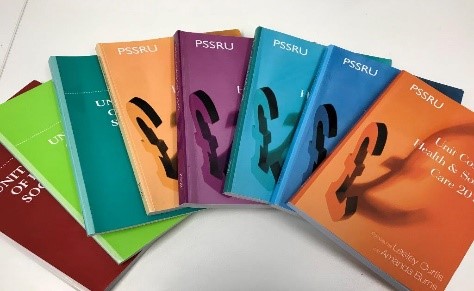February 10, 2020
 The Office for Statistics Regulation and the costs of adult social care
The Office for Statistics Regulation and the costs of adult social care
By Lesley Curtis, Research Fellow at PSSRU
Researchers and organisations using adult social care statistics will be pleased to see that in January 2020, the Office for Statistics Regulation (OSR) published Adult Social Care Statistics in England which lists all sources of adult social care data under one roof. You can find a summary in Annex B on the last page. This is the culmination of an Office for National Statistics review of data which found that there is a ‘data rich health system’ but that adult social care is ‘a major public policy area being developed in the absence of adequate statistics.’ Apart from the official adult social care statistics identified, the review found that a small number of key reports fill some information gaps. Amongst these reports, the Unit Costs of Health and Social Care (UCH&SC) is listed; and described as a report ‘providing useful information about the cost of nursing home care which can be used by commissioners, planners and people needing to estimate the costs of care of a family member, but rely on expert knowledge to utilise.’

To give you the full picture: the Department for Health and Social Care have funded PSSRU since 1992 to publish this publication annually, and have said that it would not be possible to complete analyses such as NICE health economic evaluations and DHSC Impact Assessments to the same standard without a consistent source of unit costs. Its multiple uses are described here: 101 uses for a Unit Costs of Health & Social Care volume and an overview of its contents given in our Introductory video. So that our readers can use the information to interpret and calculate other costs, we make sure that service estimates are fully transparent by including notes either within the schema or on the page opposite. There is also a glossary of difficult terms in section V.
Thirty of the 80 services costed in the report focus on the provision of adult social care and include:
- Residential and nursing care homes for older people
- Residential care homes for people requiring mental health, learning disability, physical disability support
- Day care and home care for older people
- Community based social care staff (see our database of professionals)
We are pleased that the UCH&SC has been highlighted in this review and have noted that the OSR would like to work with a range of organisations to improve social care statistics. We would welcome this opportunity as keeping our costs current is a continuous process. If there are any new cost studies you would like to draw our attention to, please contact me at l.a.curtis@kent.ac.uk or Amanda Burns a.l.burns@kent.ac.uk.
This study/project is funded by the National Institute for Health Research (NIHR) [Policy Research Programme, Unit Costs of Health and Social Care, 035/0093.]. The views expressed are those of the authors and not necessarily those of the NIHR or the Department of Health and Social Care.